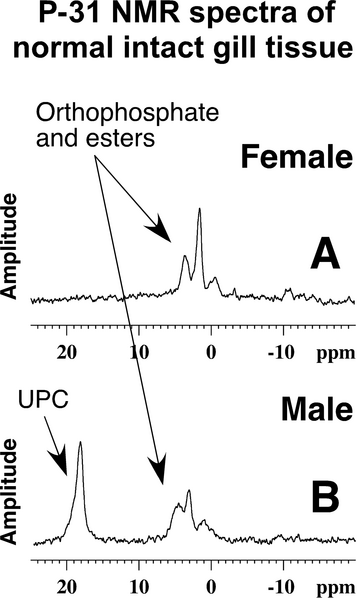Researchers at the University of Illinois at Chicago have discovered a chemical compound in male blue crabs that is not present in females -- the first time in any species that an entire enzyme system has been found to be activated in only one sex.
The research, performed using nuclear magnetic resonance, was published online Aug. 22 in PLoS ONE, the peer-reviewed, open-access resource from the Public Library of Science.
Although hormone level differences are generally accepted as the primary cause of variation between the sexes in animal and human development, the existence of a sex-specific metabolite is a previously unrecognized and potentially significant biochemical phenomenon, according to Robert Kleps, director of the UIC Research Resource Center NMR Lab and lead author of the study.

"It's possible to speculate that the presence or absence of a sex-specific metabolite might affect an animal's development, anatomy and biochemistry," Kleps said. Differences between the sexes such as susceptibility to heart disease or average life span might be due to the presence or absence of a metabolite, he said.
Now that the existence of a sex-specific metabolite has been proved for one animal, Kleps says researchers might review metabolic studies in other animals, including humans, to look for the presence of a sex-specific metabolite that might have escaped notice in the variation among individuals.
Using primarily phosphorus-31 NMR, with the capability of analyzing whole tissue, Kleps observed an unusual signal in the gill tissue of male blue crabs that was absent in females.
NMR can be measured in the nuclei of certain isotopes, including hydrogen-1, carbon-13 and phosphorus-31, whose atoms resonate at characteristic frequencies in a magnetic field. The exact frequency is slightly changed by the atom's chemical micro-environment within a particular molecule.
The researchers found in male gill tissue an atom of P-31 with a signature "chemical shift," indicating the presence of a unique, unidentified phosphorus compound.
They then isolated and analyzed the phosphorus compound, identifying it as 2-aminoethyl phosphonate, an uncommon but well-documented metabolite. AEP is not known to be a hormone.
The researchers tested gill tissue from crabs harvested in six different years from the Chesapeake Bay and the gulf coast of Florida. Specimens from each region produced similar results, confirming that the presence of AEP in males and absence in females is the norm for blue crabs.
But, Kleps said, it was still not possible to rule out that the difference between the sexes was due to a difference in their diet. Fortunately, while writing the first draft of the paper, Kleps happened to read that a rare gynandromorphic blue crab -- one half male, one half female -- had been captured by Romuald Lipcius of the Virginia Institute of Marine Science at the College of William & Mary.
The rare gynandromorph is divided down the middle, with a characteristic blue male claw and a female red claw. The underside of the crab is also visibly divided into male and female halves. After the crab died, Lipcius sent Kleps gill tissue from each side for analysis. The measured levels of AEP from the male and female gills provided additional evidence that AEP is a sex-specific compound.
"Since both sides of this strange crab have, of necessity, shared a diet and environment, we had completely independent confirmation of the sex-specific nature of this metabolite," said Kleps.
"That blue crabs have this sex-specific compound may be a fluke, or it might represent a common but overlooked process in animal development," he said.
In addition to Kleps and Lipcius, Terrell Myers and Thomas Henderson of UIC contributed to this study.





Comments